The Raidmax RX-700AT 700W 80Plus Titanium Power Supply Review
by E. Fylladitakis on July 7, 2016 8:00 AM ESTExternal Appearance
Externally, the design of the Raidmax RX-700AT PSU is very subtle and simple. If not for the fan finger guard with the thicker outer rim and parallel grid, it could be easily mistaken for yet another “run of the mill” product. Raidmax markets the RX-700AT as the “shortest 700W 80Plus Titanium” power supply, but the chassis is 165 mm long and will still not fit inside several cases that can only accommodate PSUs fully adherent to the ATX standard (160mm). A well-applied satin black paint covers the chassis of the PSU, with fairly good anti-fingermark capabilities.
Raidmax placed the sticker with the electrical specifications and certifications of the PSU on the left side of the chassis, making it visible from a windowed side panel if the PSU is installed with its fan facing downwards. The right and top sides of the chassis are entirely plain.
The rear of the RX-700AT is very simple, with only the AC cable receptacle and a small on/off switch to be found. Four connectors for the modular cables can be found at the front side of the PSU, next to the hole where the hardwired main cables exit the chassis from. All of the hardwired cables have black connectors, black wires and standard single sleeving.
It's worth repeating the cable arrangement again from the first review page:
| RaidMax RX-700AT 700W 80Plus Titanium | ||
| Connector type | Hardwired | Modular |
| ATX 24 Pin | 1 | - |
| EPS 4+4 Pin | 1 | - |
| EPS 8 Pin | - | - |
| PCI-E 6+2 Pin | 2 | 2 |
| PCI-E 8 Pin | - | - |
| SATA | - | 8 |
| Molex | - | 4 |
| Floppy | - | 1 |
Typically in a 700W power supply, especially in light of the recent release of the RX480 (and claims that two cards can outperform a more expensive card), having the potential for multiple PCIe devices can be a draw to potential buyers. Having a total of four (two fixed and two optional) 6+2-pin connectors is ideal here. With that being said, the presence of a single EPS 4+4 pin connector may be limiting to users who want to push a high-end desktop platform. 700W with an 80Plus Titanium rating will fit nicely with a number of HEDT users who require a discrete graphics card, and a number of HEDT arrangements when overclocked have the ability to add another EPS connector to assist in power delivery to the processor. This ultimately affects a small number of users, so it would seem that Raidmax aiming for the mass market could potentially reduce the price with only a single EPS connector.
Internal Design
A black 135 mm fan is responsible for the cooling of the RX-700AT. Raidmax has replaced the branding sticker on the fan’s engine with one of their own but our investigation revealed that the original manufacturer of the fan is Shenzen Poweryear. We could not find a datasheet for the particular fan model but it has a dual ball bearing engine and a maximum speed of 1500RPM.
A look inside the Raidmax Monster Power RX-700AT instantly revealed that the OEM behind the unit is Andyson, as the layout is almost identical to that of the Andyson N500 PSU that we reviewed last year. The design is based on a half-bridge inversion stage with resonant conversion, which is good but atypically basic for such a high efficiency product. It has two rectifying bridges on the same heatsink as the active PFC components, two transistors and one diode.
The main capacitors of the RX-700AT are two Hitachi products, rated at 420V/330μF each. These are very high quality capacitors but their combined capacitance appears to be far too high for a 700W PSU, which is likely to cause high inrush currents when plugging the unit in. The secondary side capacitors are supplied by Nippon Chemi-Con and Nichicon. FPCAP supplies the polymer capacitors.
The assembly quality of the RX-700AT is generally acceptable but there were several points that could use better attention, especially considering the very high retail price of the PSU. The soldering job is great, without loose or overly large joints. Most of the problems that we encountered seem to involve tasks that were likely made by hand. For example, most of the heatshrinks hardly cover the joints, with some being wrapped around just the insulation of the cable alone. One of the X-type filtering capacitors that was supposed to be glued on the side of the AC receptacle was detached and floating inside the chassis, most likely because the silicone glue used was not of good quality or did not cure properly. Such quality errors could be passable in a $30-40 unit, but they are definitely not something we expect to see in a >$150 product.


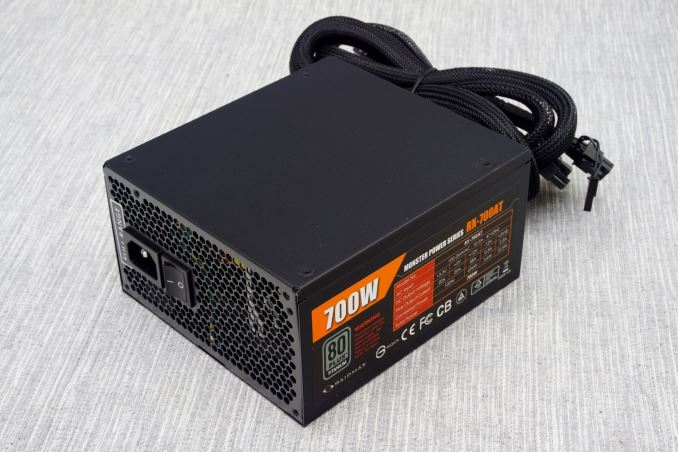
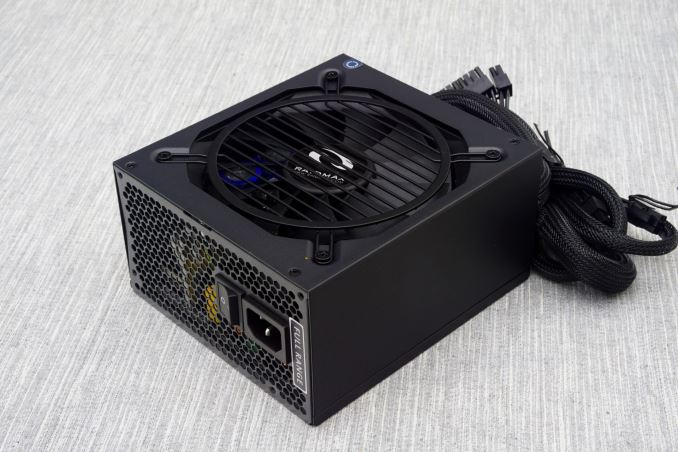
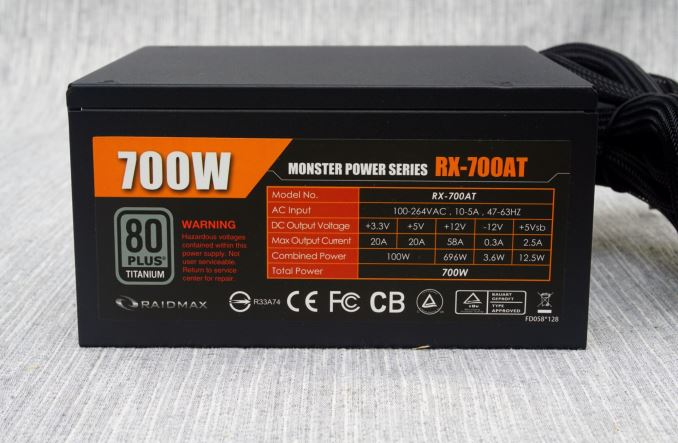
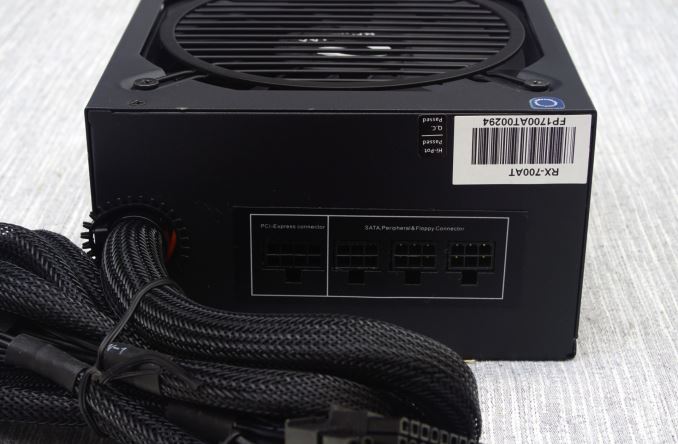
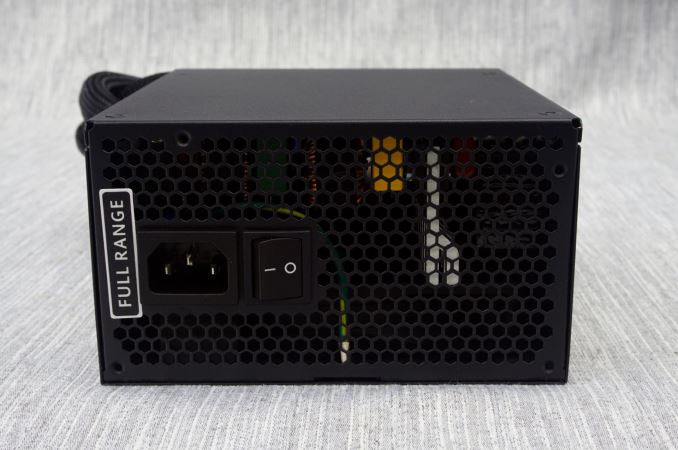
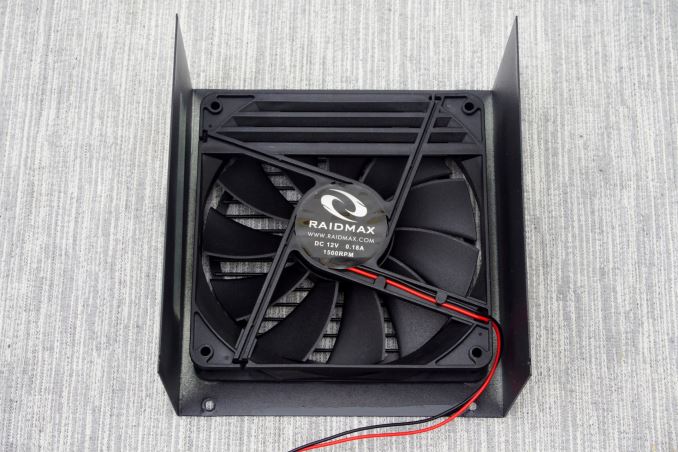
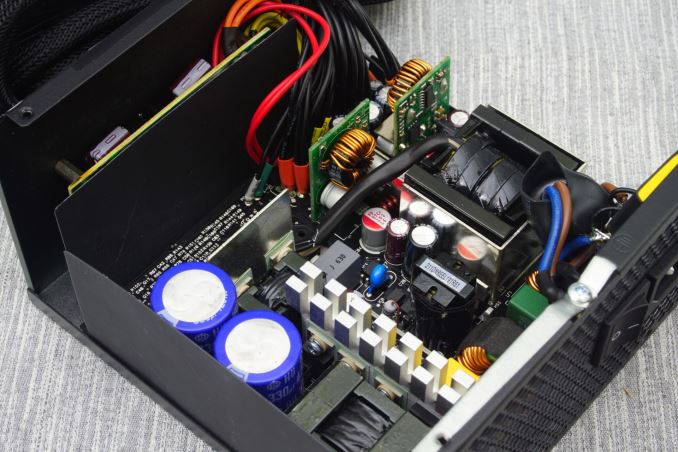
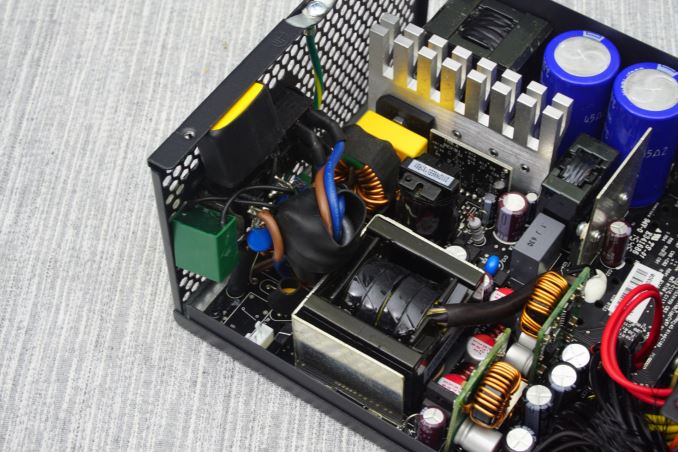
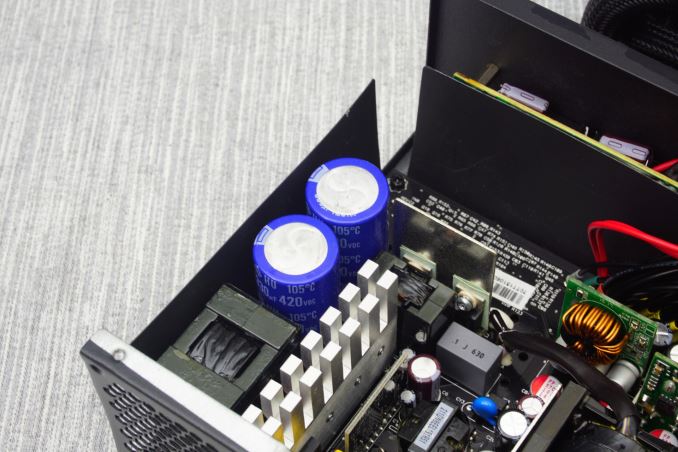
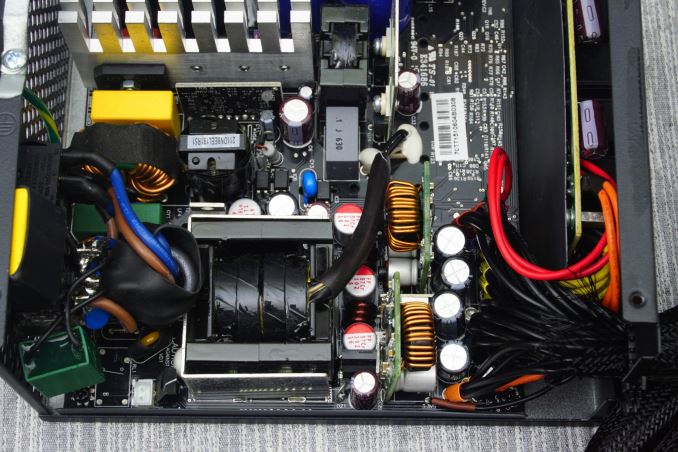
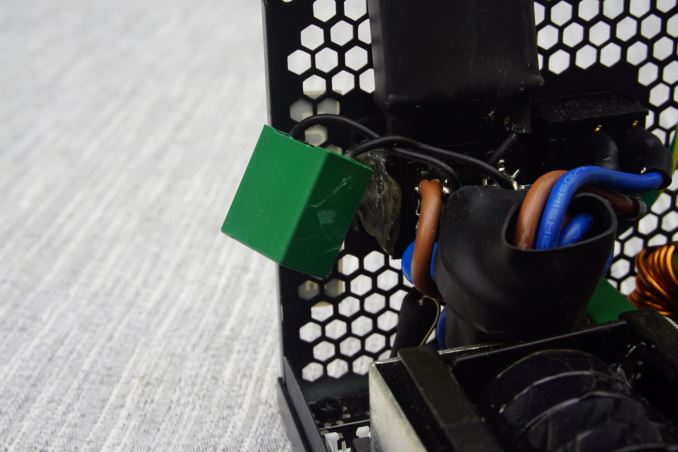








22 Comments
View All Comments
HomeworldFound - Thursday, July 7, 2016 - link
Yay, another review of a generic power supply, it's not like 10 other sites reviewed this exact model....BrokenCrayons - Friday, July 8, 2016 - link
I wouldn't put it like that, but I do see your point. My current PSU is an 8 year old 375 watt unit that I haven't looked at in so long I have no idea what company even manufactured it. Its sitting in the bottom of a case where I've been happily ignoring it. When I gutted my desktop and pulled out the old P35 motherboard and Q6600 CPU a couple months ago, I glanced at it while plugging its connectors into the new drives and motherboard. In other desktops, I've used PSUs bundled with a bottom-feeder cheap case. They work, so I shrug and move on. Power supplies play an important role, but in a lot of cases, they're a "who cares" component that's below notice.That said, as a hardware reviewer site covering PC components, AT has a limited number of components to review inside a given desktop PC and the PSU is one of those major components. In a stagnant market filled with uninteresting, routine releases, PSUs provide a way to fill in gaps between the last generation of Intel CPU and the next one that offers it's usual 5-10% more performance. Besides that, the power supply reviews are well-written and make for interesting reading even if I'll personally just pick of the latest no-name gray box supply once every 10+ years when connector standards leave me so far behind that I'm forced to grudgingly grab a newer one because some component won't fit and I don't want to add to the rat's nest by using adapters.
HomeworldFound - Friday, July 8, 2016 - link
That'd be alright but you can see its a poor quality generic power supply and the article doesn't make sense, the conclusions of where this product should sit are in conflict. I know they might only have a few products to review and sure, I can agree the power supply is very important but this isn't some item where Anandtech or it's users say "We have to get one of these to test" this is a case where a manufacturer is sending out a power supply to everyone they can just to get noticed.ComInliner - Thursday, July 7, 2016 - link
That all forgot to say that this POS doesn't even beat platinum units and posted awesome performance figures nowhere near reality. I bought it after reading the first reviews in early May or about that and I just bought a seasonic unit 3 weeks later. It is good to see -some- level of honesty here and even though these numbers are much worse than other reviews I still think that the psu is even worse. Mine was atrocius, overheating, noise to the speakers, etc. Just buy something else.Oxford Guy - Friday, July 8, 2016 - link
"Dual ball bearings are exceptionally reliable but are one of the loudest (if not the loudest) type of bearings for high speed fans"The loudest are single ball bearing fans. Dual ball bearing fans are the second-loudest type of fan.
Oxford Guy - Friday, July 8, 2016 - link
"the RX-700AT is hardly a competitive product.""the RX-700AT is a choice to consider"
err...
echoe - Friday, July 8, 2016 - link
It is a choice to consider if you demand an 80+titanium power supply and don't need tons of power, as the others are over $200, but it is bad compared to its actual market. That's how I read that?sheh - Friday, July 8, 2016 - link
Why does the plastic ring, around the hole for the fixed cables, extend beyond the PSU width?http://images.anandtech.com/doci/10461/RMPL700W_07...
Laststop311 - Saturday, July 9, 2016 - link
I don't see how they can say this price brings it more into the mainstream. 170 dollars isn't cheap. Is an extra 2% efficiency worth paying over double the price versus a platinum unit. I got an EVGA Supernova 850 P2 for 119.99 with a 40 dollar pre loaded debit card with it. Effectively paying 79.99 for a 850 watt 80+ platinum, 10 year warranty, full modular cables, 100% japanese caps, 140mm fan with eco mode runs totally silent and fanless at 25% and under loads meaning using 225 watts or less is completely silent which is almost all the time unless I am putting large loads on gpu and cpu at the same time.The evga psu has 150 more watts, has a larger higher quality fan, is fully modular instead of semi modular. the overall build quality is better in the evga unit, has 2x EPS connectors vs the 1 connector for the raidmax, no smart fan controls on the raidmax the fan is always on no matter what the evga unit only uses fan on loads above 225 watts prolonging fan life, the raidmax only has a 2 year warranty vs the 10 year warranty on the evga, the EVGA unit is only 1% less efficient than the raidmax basically within a rounding error of efficiency, EVGA customer support is superior to raidmax, has 6x pci-e connectors vs only 4 on the raidmax also has 9 sata vs 8 and 6 molex vs 4.
This huge amount of advantages would make you think well geez that evga must of cost at least the same or a bit more. No even without the 40 dollar rebate card sale it was 120 dollars. I paid 80 dollars with the rebate card sale and got a WAY better PSU in every single way other than losing 1% in efficiency. You'd have to be very ill informed to choose this over the evga unit i got.
philipma1957 - Saturday, July 9, 2016 - link
It is hard to argue the evga 850 p2 pretty much crushes this unit.And it is lower cost, but if you insist on a titanium the evga 850 t2 also crushes this unit although it cost more money. Bottom line is very few people need a titanium and if you do and you have a steady 50% draw on the psu why on earth buy this one with a 2 year warranty.
when evga gives a 10 year warranty. I use lots of psus I mean 10 to 20 at a time.
I mine a lot and this is not what I buy when I build a two card mining/gaming rig for a friend .
I go evga first choice 850 t2 two card rig or 1000t2 3 card rig. third choice is silverstone 700 watt titanium for 2 card rigs (cheaper and at least a 3 year warranty)